
|
|
Conference Location
|
|
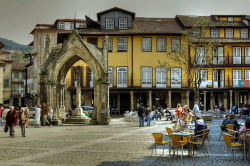
|
Guimarães is one of the most important historical cities of the country. Its historical center is a UNESCO World Heritage Site, making it one of the largest tourist centers in the region.The city is often referred to as the "birthplace of the Portuguese nationality" or "the cradle city" (Cidade Berço in Portuguese). |
|
This might be because the administrative seat of the County of Portugal was established there by Henry of Burgundy, or that it might also been the birthplace of Afonso I of Portugal, the first Portuguese king or because of the historical role of the city in the Battle of São Mamede (June 24th, 1128), which had a tremendous importance in the formation of Portugal and was fought in the vicinity of the city, However, due to the needs of the Reconquista, the governing center was changed to Coimbra in 1129. The "Vimaranenses" are also called "Conquistadores" (the Conquerors) in relation with the historical heritage of the conquest initiated in Guimarães. |
|
History |
|
|
The area in which Guimarães is integrated had permanent settlements since the Chalcolithic. In its municipality this can be witnessed by the Citânia (Castro) of Briteiros and Sabroso and archeologic station of Penha. The Ara of Trajan hints the use of village of Caldas das Taipas as a spa town by the Romans. |
|
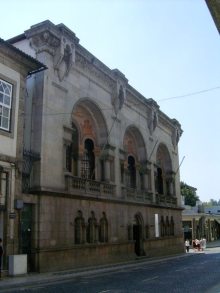
|
After the political actions of the Reconquista organized by the Kingdom of Galicia in the 9th century, the medieval foundations of the actual city have roots in the 10th century. At this point, the Countess Mumadona Dias, erected a monestery in her property of Vimaranes, which originated the fixation of people in the area known as "vila baixa" (downtown). At the same time, she ordered the construction of a castle on the hill area which became known as "vila alta" (uptown), to defend the settlement. To connect these to areas the Rua de Santa Maria (St. Maria street) was laid. The monastery became the "Real Colegiada" (Royal Collegiate church) and throughout time acquired importance due to the privileges and donations given to it by nobles and kings and it became a famous pilgrimage site. |
|
Henry, Count of Portugal approved the first national foral possibly in 1096 (but not confirmed). The foral proves the growing importance of the village of Guimarães at that time, which was chosen as the capital of the County of Portugal. On the 24th of June of 1128, the "Batalha de São Mamede" (Battle of São Mamede) took place in Guimarães. |
|
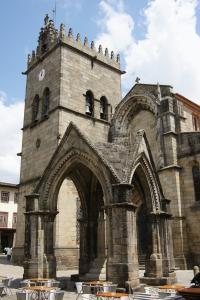
|
Until the 19th century the structure of the city did not suffer many transformations besides the construction of a few more churches, convents and palaces. It was by the ending of the 19th century that new urbanistic ideas of hygiene and symmetry that the village, that was promoted to city by the Queen Maria II in the 23rd of June 1853 had its greatest changes. |
Parts of this text were copied from 
Conference Venue
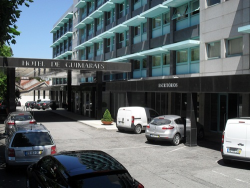 |
The conference venue will be the |
How to reach Guimaraes and the conference venue 
By Plane
|
When travelling by plane to Guimaraes the nearest airport will be Porto. Porto is served by Francisco Sa Carneiro Airport (IATA: OPO) which is located some 15km to the north-west of the city centre. |
||||||||||||||||||||
By Metro |
The Porto Metro system. has at present five lines: lines A (blue), B (red), C (green) and E (purple) all begin at Estadio do Dragao (home to FC Porto) and terminate at Senhor do Matosinhos, Pavoa de Varzim (via Vila do Conde), ISMAI (via Maia) and Francisco Sa Carneiro airport respectively. All lines intersect at the central Trindade station. The system uses the "Andante" ticketing system, the first fully contactless ticketing system used in public transportation in the world. See a map for help here You can download copies of the metro maps here. Map 1 |
||||||||||||||||||||
By Bus
|
From the centre of Porto you may take a bus to Guimarães at Parque da Magauanha (close to Trindade), where the Bus Station to Guimarães is located. See the following timetable (Monday to Friday):
|
||||||||||||||||||||
By Train |
Porto's main railway station is situated in Campanha, on the main line to Lisbon. From here, both metro and suburban rail services go to the city centre. The main central station is at SAo Bento, which is itself a notable attraction. Guimaraes is 50 km from Porto. |
||||||||||||||||||||
By Car |
When travelling by car you will find many ways to get at Guimarães. From the North you have the highway from Braga and Viana do Castelo and also from Coruña (Spain). From the East you have the highway from Bragança and Vila Real. From the South you have the Highway which connects Lisbon and Porto and from the border with Spain at Vilar Formoso. |
||||||||||||||||||||
By Taxi
|
Should you wish to take a taxi from the airport to Guimarães: the journey takes approximately 60 min. and the fare is around 45€. Two companies working in the Porto area are:
|
||||||||||||||||||||
On Foot
|
From the train station is is approximately 5 minutes to the entrance of the hotel. You take the main train station exit in Guimaraes cross the street and go left for approx. 100 m where you will find the hotel. |
Guimaraes Maps
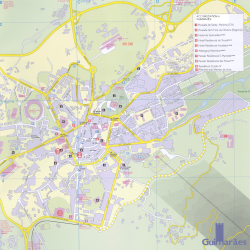
|
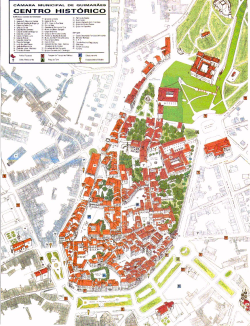
|
Click on the maps above for a more detailed view
Useful links
|
Tourist Information |


 Guimarães is a Portuguese city located in Braga District, in the North of Portugal and in the Ave Subregion (one of the more industrialized sub-regions of the country), with a population of 52 181 inhabitants It is an historical city that had an important role in the formation of Portugal and it was settled in the 9th century, at which time it was called Vimaranes. This denomination might have had its origin in the warrior Vímara Peres, when he chose this area as the main government seat for the County of Portugal which he conquered for the Kingdom of Galicia.
Guimarães is a Portuguese city located in Braga District, in the North of Portugal and in the Ave Subregion (one of the more industrialized sub-regions of the country), with a population of 52 181 inhabitants It is an historical city that had an important role in the formation of Portugal and it was settled in the 9th century, at which time it was called Vimaranes. This denomination might have had its origin in the warrior Vímara Peres, when he chose this area as the main government seat for the County of Portugal which he conquered for the Kingdom of Galicia.

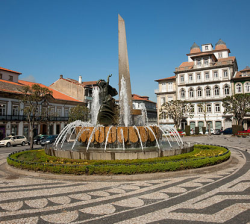
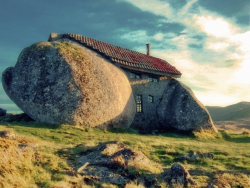
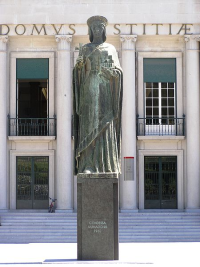
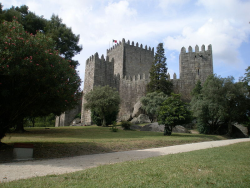
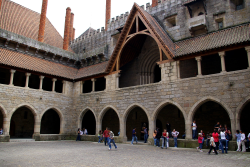
 Tel: +351.253 424 800
Tel: +351.253 424 800 Fax: +351.253 424 899
Fax: +351.253 424 899 Email:
Email: 




.png)












